Heliotrope: description, varieties, planting and care

When choosing flowers to create a garden arrangement in a flower bed, pay attention to such an interesting plant as heliotrope. It harmoniously fits into any landscape and is able to decorate a summer cottage with its lush inflorescences. In addition, this culture attracts the attention of gardeners for its delicious fragrance.

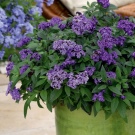
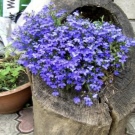



Peculiarities
In total, about 300 species of this representative of the flora are known. In regions with severe winters, it is customary to keep it as an annual species, because it does not differ in winter hardiness, and for growing in indoor conditions, you can plant a flower as a perennial shrub. In greenhouses, the flower can grow for several years. Flowering usually starts in July and lasts until the thermometer drops by several marks - as a rule, this period takes a little more than a month.
This plant is famous for its love for the sun's rays, for which it received the name "heliotrope", which from Greek means "turn to the sun." The boat-shaped leaves are covered with a dark green color and symmetrical veins, they grow in a checkerboard pattern.
Each plate contains several dozen miniature flowers, the total inflorescence reaches a diameter of 25 cm.



Most often, the culture is decorated with flowers of blue and purple colors, but white varieties with a yellow center come across. After ripening, the fruits of the plant are divided into four fragments and can serve as seed for the next season. When growing a crop, you should be aware of the toxicity of some varieties. Poisonous properties can even lead to paralysis of the central nervous system. Such species are not suitable for keeping in the garden or in the house, but they are used in alternative medicine. For example, extracts can be used to create medicines for worms, lichen, urolithiasis, warts and other ailments. This remedy is not used in traditional medicine.
These flowers are widely used in landscape design. For example, they are used to decorate country beds and flower borders. They look impressive against the background of a green lawn, they look beautiful in the neighborhood with yellow, red or white flowers, they create a spectacular landscape when they are grown as potted crops that decorate balconies.
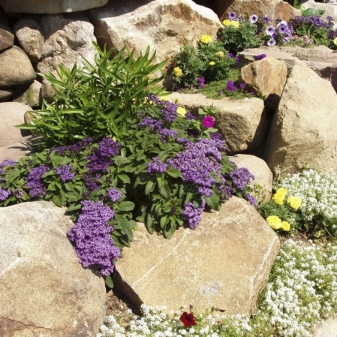

Types and varieties
The following varieties of the presented culture are distinguished.
- Treelike or Peruvian (Heliotropium arborescens). This perennial reaches a height of 30-45 cm, has green leaves with many veins. The foliage surface is shiny, covered with light nap. The species is characterized by small, bright flowers formed at the top of the stems into large inflorescences.
The main colors of the varieties are lavender, purple, white, lilac, blue.


- Pubescent. This herbaceous species is distinguished by straight, highly branched stems. The leaves are dark green, pubescent and compact in size. On the tops of the stems, spikelets are formed with many miniature white or lilac flowers.


- European (Heliotropium europaeum L). Another representative with dense fleecy foliage of green or bluish-green color. The inflorescences are of good growth, they form a large number of compact white or lilac buds with a yellow center.

- Hybrid. The leaves of this plant are soft, pubescent, lanceolate or spear-shaped. The main advantage of hybrid varieties is long and lush flowering, during which the opening of lilac, blue and purple flowers is observed.

The following varieties, the most popular in modern gardening, deserve special attention.
- "Sea breeze". This is a tall specimen, the size of which reaches 45 cm. It has a long flowering period - from May to October. The flowers smell very nice, the aroma resembles the smell of vanilla. The resulting flowers are blue-violet in color.

- "Marina". This is a variety of a tree group that can grow up to 50 cm.Under favorable conditions, you can find specimens up to 2 m in height, but in our latitudes the culture is still grown as an annual. The flowers of the variety have a deep blue-violet hue and a diameter of 15 cm. Flowering begins in June and continues until frost. The most common hybrids are Mini Marine, Dwarf Marine and Marine Blue.



The subtleties of growing at home
When keeping a flower in a room, remember that the life of the plant depends on good lighting. For at least 6 hours a day, the culture should enjoy the sun's rays. So, you can put the pot on the window in the morning and in the evening, when the sun is not baking so hot and is not able to burn the delicate leaves. At noon, it is recommended to protect the flower from the sun's rays by shading it.
A lack of light will negatively affect the health of the plant, flowering may be weak, the shoots are deformed. To avoid this, you should use fluorescent or phytolamps for artificial lighting when growing a flower in a pot. An important factor in keeping the culture in the room is the maintenance of air humidity.
This figure should be higher in winter, when, due to working radiators, the humidity in the room does not exceed 30%.


It is better to refuse spraying the plant, since drops falling on the pubescent surface of the leaf plates can provoke the formation of fungi. If you cannot do without spraying, then it is better to perform the procedure in the morning so that the moisture has time to evaporate from the foliage before nightfall.
To achieve the desired moisture content without spraying, you can use a pallet with wet expanded clay, but it is important to ensure that the moisture does not come into direct contact with the bottom of the pot. Another way is to frame the bush with a layer of moist sphagnum moss. Household humidifiers can also be used. Some growers simply place a bowl of water next to the pot. When keeping a flower in an apartment, do not forget to ventilate the room well. The plant will feel comfortable with constant air circulation.



Watering is carried out as the upper layer of the substrate dries out. In autumn and winter, the frequency of watering is reduced. For this procedure, use only settled or bottled warm water and make sure that no drops fall on the leaves. For this plant, you can also use bottom watering, that is, placing the pot in a large container of water for a few minutes.
The presented culture needs additional feeding during the growing season. For this, universal liquid fertilizers are suitable. Additional food is added a couple of times a month in a volume that is halved compared to the instructions on the package.
In the autumn-winter period, top dressing is unacceptable - this is a dormant period when the flower stops its development.


How to plant in open ground?
The timing of planting is determined by the climate of a particular region, but in any case, it is important that the cold is already over by the time of planting. Usually in our latitudes it is customary to plant the culture in early June. As already mentioned, this is a light-loving flower, so choose a place well-lit by the sun for planting. However, the scorching rays can harm young sprouts.In this regard, it would be good to place the plant in an area with diffused light. For planting, flower beds with high humidity are not suitable, so avoid places in lowlands or near bodies of water. Plant-friendly soil - air-permeable fertile soil enriched with humus. If the choice fell on loamy soil, then it should be diluted with peat and sand.
A good soil option is a nutritious acidic soil with a high organic content. To make the soil more breathable and comfortable, it is allowed to add leafy, sod or heather soil to it. To organize high-quality drainage, you can mix a little river sand of coarse fragmentation or perlite and vermiculite into the ridge, and charcoal or ash can be used to make the earth porous and fertile.



The process of planting in open ground is as follows:
- prepare holes for planting;
- add leafy soil and humus to the planting holes;
- using the transshipment method, plant the seedling in the hole;
- sprinkle humus on top of the hole around the bush;
- moisten the planting site;
- the recommended planting pattern is 30x30 cm.


How to take care of it properly?
Watering
Freshly transplanted seedlings should be watered 2-3 times a week in the first 14 days, then the flower needs to be moistened only when the top layer of the earth dries out. Especially overdrying negatively affects the state of the culture during the period of active growth and budding, therefore it is important that the soil always retains a certain amount of moisture.

Fertilizer
You can feed the plant by alternating mineral fertilizers and organic matter. Rotten manure, poultry manure solution, humus are suitable as an organic composition. The mixture is applied after abundant watering.
If the flower has just been transplanted, then there is no need to feed it. Firstly, usually the substrate is already enriched with useful components, and secondly, the root system can be injured during the transplantation, and now its wounds should heal, which can be prevented by nutrient solutions.


Mulching and loosening
A layer of mulch can be applied if the gardener is not able to regularly visit the dacha. So, can be mulched with dried grass, straw, sawdust or shavings... This measure will allow for a long time to retain moisture in the ground, and will also protect the plantings from infection with fungal diseases provoked by the contact of the bush and damp earth.
After watering, the soil should be loosened so that the roots receive the necessary portion of moisture and air. However, if the gardener has mulched the flower bed, then there is no special need for loosening and removing weeds.


Transfer
It is customary to grow the culture as an annual, and therefore in the fall the plantings are dug up and disposed of. If the gardener wants to save the plant for the winter, then you can remove the uterine part before the onset of frost, transplant it into a pot and bring it into the house. In an apartment environment, it is important to keep the plant at a temperature of + 15 + 18 degrees.
A transplant will be easier to transfer to a specimen that has not grown much and bloomed later than the others. Transplanting is carried out by the transshipment method. The volume of the pot is selected according to the size of the root system.

When and how to collect seeds?
As a rule, seeds in the Russian climate in the garden do not have time to ripen, as they quickly freeze. And even if it is possible to collect them, then such material does not have a special germination and perspective and does not guarantee a result. That's why many gardeners choose to buy ready-made seeds from nurseries and flower departments.
If you still want to try to grow a flower from your own seed, then you should wait until the inflorescence withers completely before blackening, after which it is cut off, the seeds are removed from the boxes, sorted out, dried and stored in a paper roll.

Wintering
The flower will not survive winter in the open field, so it is brought into the house.Some specimens can be planted for the frost period in a greenhouse or greenhouse, where the temperature will be maintained at + 10 + 15 degrees.
If the thermometer exceeds the indicated marks, then the shoots will elongate, and in the spring the cuttings will be weak.

Reproduction methods
Cuttings
Planting material during grafting is obtained from perennial mother plants, which are brought into the room for the winter. You can cut from the end of winter to May. The step-by-step process looks like this:
- cut off cuttings with 3-4 knots;
- eliminate the leaves from the shoots, and soak their tips in a solution of "Kornevin";
- mix humus and sand in proportions 2: 1 and fill the container with the resulting mixture;
- plant the cuttings in a container and lightly sprinkle with sand;
- treat the planting site with a manganese solution;
- cover the container with glass or transparent wrap.

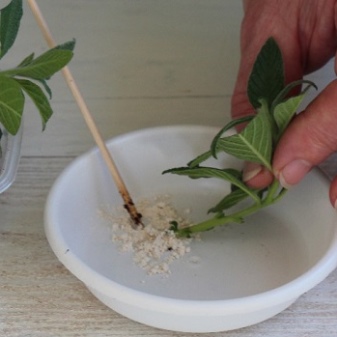
Further, the cuttings require special care. Keep the temperature + 21 + 24 degrees, open the container for ventilation every day, moisten the substrate. Transplantation of cuttings is carried out after rooting. They are usually ready in 2-3 weeks. For planting, mix peat, turf and sand in a ratio of 4: 2: 1 and add the mixture to the pots, where the sprouts will be transplanted.
In the first 7 days after planting, the sprouts should be protected from the sun and sprayed 2-3 times a day. As soon as the plants get stronger, they can be planted in open ground.


Seeds
Before starting sowing, gardeners are advised to steam the prepared soil to prevent the development of fungal infections. Next, the earth should be placed in a container, carefully tamped, sowed evenly and lightly sprinkled with soil. The seeds planted in this way will be protected from drying out. Further, the florist should perform abundant watering of the planting site. You can use a sprayer for this so that the water is evenly distributed throughout the entire volume of the container. It is advisable to put the pot in a greenhouse or other warm place where the temperature is maintained at + 18 + 20 degrees.
As soon as the first shoots hatch (after 5-20 days), the container can be placed on the windowsill. The temperature favorable for seedlings is + 20 + 22 degrees, so it is better to keep the container with seedlings on the south side of the window.


Diseases and pests
Now let's take a closer look at the most common diseases of the presented culture and methods of dealing with them. These problems can arise if the gardener does not follow the rules of agricultural technology. Some diseases are triggered by inappropriate living conditions, while others are caused by the negative effects of harmful insects.
- Spider mite. If this insect attacked the plant, then a thin cobweb will be visible on it, the flower will look lifeless and will soon dry out. To save the culture, you should treat it with soapy water or apply the means "Karbofos", "Intavir", "Fitoverm". As a preventive measure, it is important to remove fallen leaves and inflorescences in time.
- Aphid. Another common enemy of the plant. By description, it can be compared to a miniature green or black moving dot. When aphids attack on leaf plates, bites and sticky plaque are noticeable. Foliage begins to change shape, flowering becomes poor or absent altogether. In the fight against aphids, solutions of laundry soap or vegetable oil help well. From purchased funds, the recommended ones are "Fufanon", "Akarin", "Aktellik". To prevent the onset of aphids, do not apply nitrogen-containing fertilizers to the soil, plant nettles, green manures, onions, and garlic nearby.
- Gray rot. Dry brown plaques indicate the presence of the disease, the stem takes on a watery structure, a grayish fluff forms on it, the plant rots and dries up. Bordeaux mixture, as well as Topaz, Champion, Integral preparations, will help to rid the bush of the disease. It is important to eliminate the affected plant fragments, and to prevent the disease, observe the distance between plantings and prevent moisture stagnation.
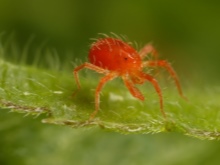
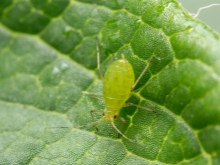

In the next video, you will find a reliable way to plant heliotrope seeds.







































































































The comment was sent successfully.